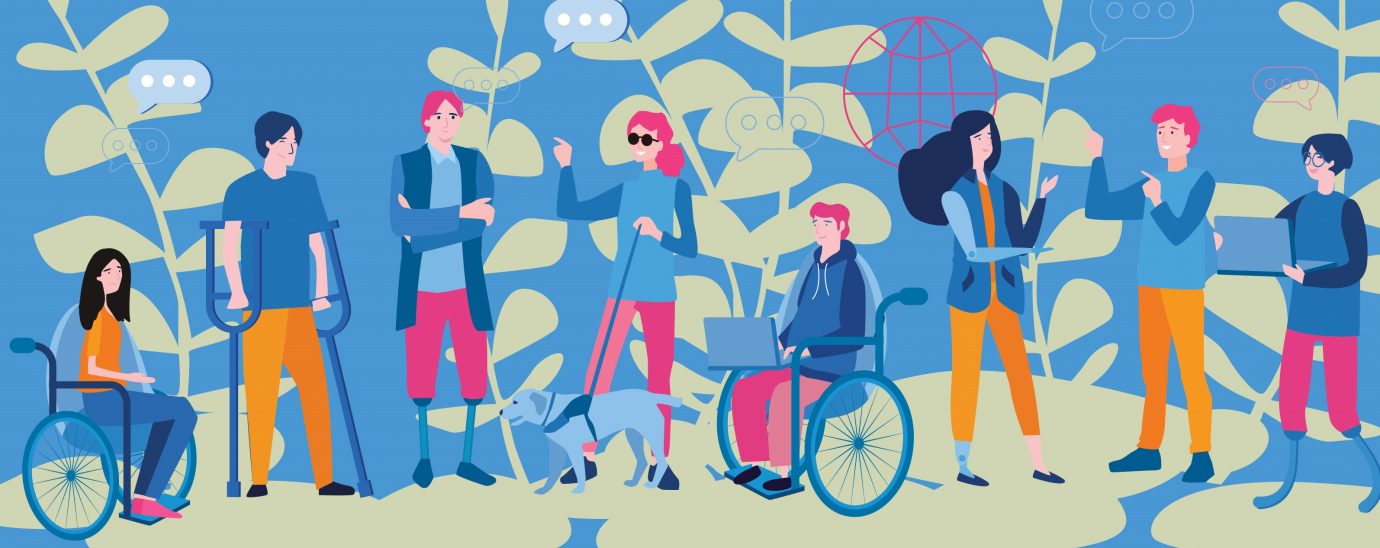The impact of AI on web accessibility

David Gevorkian, CEO at Be Accessible Inc, discusses the impact that Artificial Intelligence has had on making the web more accessible to individuals with impairments and disabilities.
Artificial Intelligence (AI) is no longer the stuff of sci-fi movies and books. Today, we enjoy various AI technologies in our everyday lives, from smart cars to smart homes. But the benefits of AI developments are not limited to making life convenient for the consumer. Artificial intelligence is also helping remove accessibility barriers. Why is this important? Aside from the numerous ADA lawsuits in the last few years, web accessibility ensures that individuals with disabilities experience the world wide web in the same way that everyone else does.
AI supports people with disabilities
As we’ve already mentioned, AI-powered technologies remove barriers that limit the accessibility of the digital world for people with disabilities.
Interaction with the web is possible
AI-powered solutions enable people with disabilities to engage with web content in many ways. Here are a few examples:
- AI helps people with cognitive impairments or low literacy skills to understand the content better by providing text summary.
- Apple’s Siri technology allows users with limited dexterity to dictate a Google search.
- AI-powered solutions such as Microsoft Translator enables deaf users to engage with audio content online by generating closed captions and translations.
- Facebook’s captioning tools provide for visually impaired users.
Confirming accessibility is not enough
Human testing & development should go along with AI
There’s no question that the easiest way to ensure compliance is to design and build your digital product with the ADA web accessibility standards in mind. For some, their digital product (i.e. website) has already been built and ensuring accessibility will take time. Checking every requirement manually will take time.

This is where AI can help. Not only does AI help support disabled people, it can also help non-disabled users discover possible accessibility issues that need resolving. For example, using screen readers and similar assistive technologies for usability testing will provide an experience that is more similar to what a disabled user will experience during interaction with a digital product and will help uncover potential challenges that require correction.
Accessibility is about real people
Of course, this does not mean that AI can eliminate the need for manual testing. The human element provides insight on design aspects such as fonts and color contrast. Manual testing provides real user and less expensive feedback. Additionally, human testers will provide feedback regarding user-friendliness and customer experience.
AI and image accessibility
It’s a sad thing to say, but a lot of websites contain images that do not provide descriptive text for visually impaired users. Fortunately, several companies have invested in creating AI-powered solutions that automatically recognize images and provide alternative text. Google, for example, developed Cloud Vision API which can recognize images as well as their text context. This technology also detects faces and landmarks. Microsoft and Facebook have also developed similar technologies.
It is important to note that this technology is still new. It cannot always accurately describe images. Humans still do better, especially when it involves accessibility testing for sufficient color contrast.
AI and content accessibility for links and headings
Another issue that AI testing cannot easily resolve is determining accessibility of links and headings. AI technology is still in its infancy and it cannot evaluate whether the link text provided allows visually impaired users to understand the purpose of the link.
The same can be said for headings. While AI testing can check for the presence of headings within a website, it cannot determine whether the words used in the heading are an appropriate description of the block of content. When it comes to these aspects of accessibility, manual testing is still the best option.
Usability & accessibility
AI helps with technical requirements related to underlying code
Usability testing is a method that helps determine how people will use the system. It allows them to evaluate how easy the digital product is to use and whether it helps achieve the user’s purpose. With usability testing, developers are able to get feedback on any issues or challenges that need to be overcome in order to prevent the product from failing in the market.
There are definite ways that AI can help improve the usability of a digital product. It can help improve each individual’s user experience making customer interactions more personalized. Chatbots, for example, can enhance the user experience by providing support to customers 24/7. AI can also be used to provide users with personalized recommendations.
However, as much as AI helps improve the usability and accessibility of a digital product, real human testing cannot be replaced. For example, while AI can help recreate the visual design of other digital products, it cannot design something new on its own that will appeal to the broadest range of people. This is because visual appeal is very much subjective, and AI cannot always identify biases.
READ MORE:
- Inside Mimecast’s The State Of Brand Protection 2021
- ServiceNow delivers new security integrations with Microsoft
- Microsoft and Darktrace join forces to provide self-learning AI cybersecurity to users
- AT&T Business and Cisco usher in new era of enhanced cloud communications for a hybrid workforce
Conclusion
As you can see, artificial intelligence can help promote accessibility in the digital as well as the physical world. It can also help companies achieve accessibility through testing. However, we can never ignore the importance of the human element. While it might not be the most thorough method of confirming compliance, accessibility is about real people and requires real human intelligence testing.
For more news from Top Business Tech, don’t forget to subscribe to our daily bulletin!